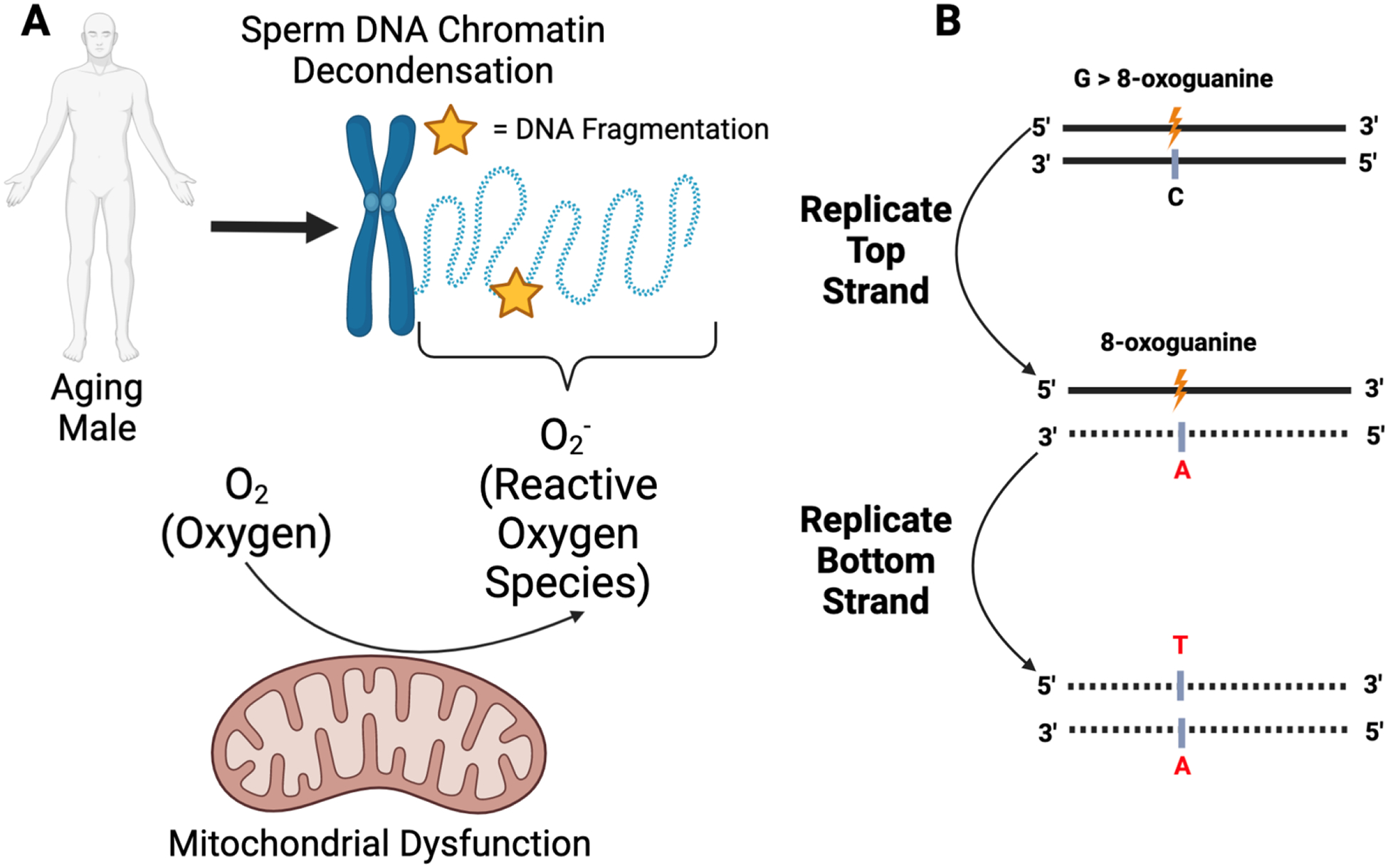Figure 1 -.

Schematic diagram of oxidative-stress induced DNA damage and mutation
(A) Sperm DNA chromatin decondensation, as a function of increased paternal age, has been hypothesized as a mechanism underlying increased DNA fragmentation rates. Specifically, sperm DNA decondensation exposes the DNA to reactive oxygen species (ROS) generated from several sources, including mitochondrial dysfunction. These ROS can induce DNA damage in the form of double- or single-stranded breaks (yellow star). (B) Oxidative stress can result in the conversion of the guanine nucleotide to 8-oxoguanine (orange). During subsequent rounds of replication, if left unrepaired, 8-oxoguanine will complement adenine rather than cytosine. Further replication of the strand harboring adenine (red, middle panel) will result in a complementary strand harboring a thymine nucleotide at the site formerly occupied by a guanine nucleotide (red, bottom panel). Figure made with biorender.
